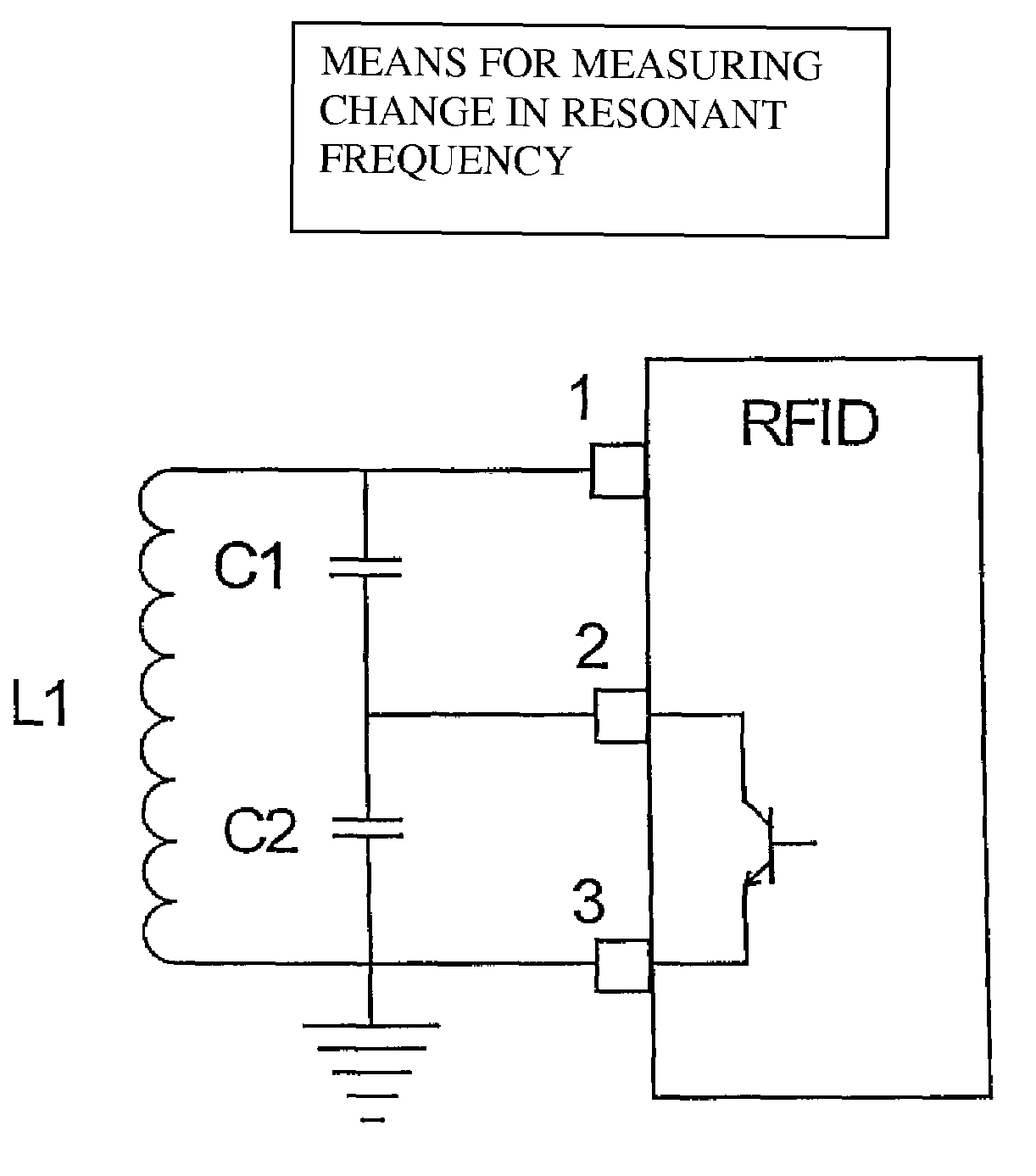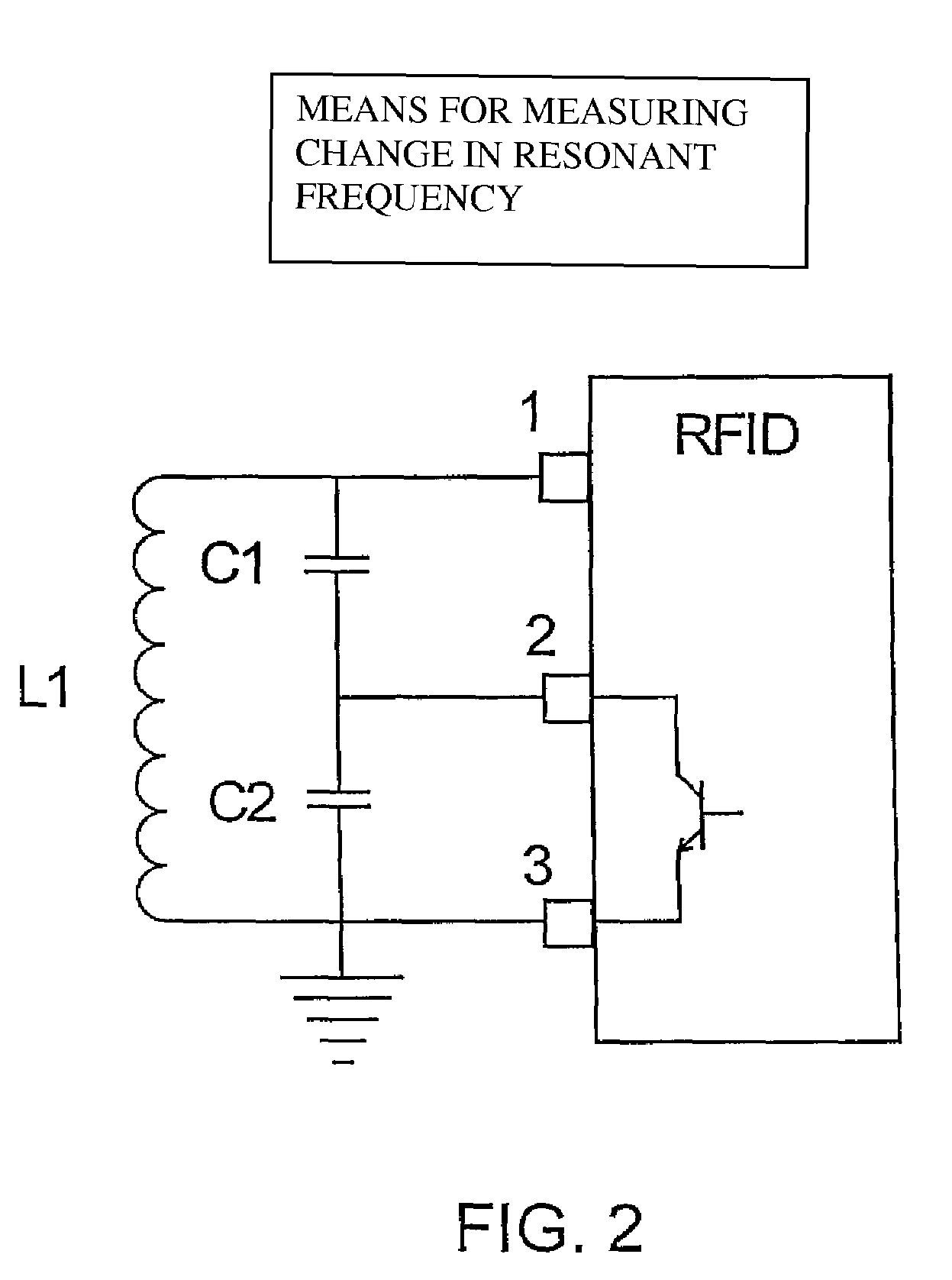Sensor for monitoring environmental parameters in concrete
a technology of environmental parameters and sensors, applied in alarms, digital computer details, instruments, etc., can solve the problems of inconvenient monitoring of environmental parameters, time-consuming and expensive, and the corrosion of embedded reinforcing steel, so as to prolong the service life of concrete and reduce infrastructure costs
- Summary
- Abstract
- Description
- Claims
- Application Information
AI Technical Summary
Benefits of technology
Problems solved by technology
Method used
Image
Examples
Embodiment Construction
[0074]The present invention provides a low-cost, efficient, long-lived sensor for monitoring concrete that is powered and interrogated using radio frequency (RF) energy from a distance (e.g., a distance of over one meter) and that returns a unique identification (“ID”) number so that data can be correlated with sensor location.
[0075]The invention provides a sensor for monitoring an environmental parameter in concrete comprising:[0076](a) an enclosure for embedding in concrete;[0077](b) a detecting means connected to the enclosure for detecting at least one environmental parameter in concrete, the detecting means comprising at least one capacitive element for measuring capacitive change;[0078](c) an active material connected to the enclosure,[0079](i) the active material being liable to respond to the environmental parameter, and[0080](ii) the active material being operably connected to the capacitive element;[0081](d) a RFID chip mounted within the enclosure, the RFID chip being ope...
PUM
 Login to View More
Login to View More Abstract
Description
Claims
Application Information
 Login to View More
Login to View More - R&D
- Intellectual Property
- Life Sciences
- Materials
- Tech Scout
- Unparalleled Data Quality
- Higher Quality Content
- 60% Fewer Hallucinations
Browse by: Latest US Patents, China's latest patents, Technical Efficacy Thesaurus, Application Domain, Technology Topic, Popular Technical Reports.
© 2025 PatSnap. All rights reserved.Legal|Privacy policy|Modern Slavery Act Transparency Statement|Sitemap|About US| Contact US: help@patsnap.com



